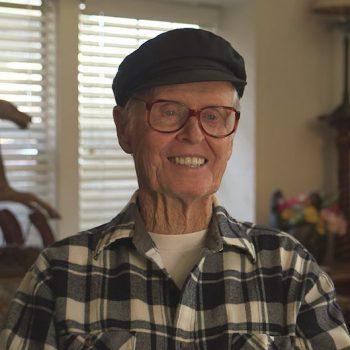Singing has always been central to Ron Hargrave’s life. As a young man he even went to Hollywood to write songs and perform. But at age 89, he began feeling too tired to walk more than half a block. And worse for Ron, he couldn’t draw enough breath to sing.
“I was going down the tubes,” he said. “Old man time was moving in.”
“It brought my life back as it was.”
Doctors diagnosed him with severe aortic stenosis, a narrowing of the aortic heart valve that obstructs blood flow and forces the heart to work harder to pump blood to the body. Without a new valve, Ron could die.
Typically, heart valve replacement involves invasive open-heart surgery – cutting open the chest and cutting through the breastbone – then removing the diseased valve and sewing in a new, artificial valve. But due to Ron’s age and weakness, and the fact that he had undergone an earlier open-heart surgery for a different problem, doctors considered him a high-risk patient who might not survive another open-heart surgery.
“Ron’s symptoms were rather advanced. We thought TAVR would be an excellent option,” said cardiothoracic surgeon Mark Cunningham.
“When I walked into the unit the following day, all of the nurses came up to me and said ‘you have to go and see Mr. Hargrave. He’s been singing,’” said Mary Schoenbaum, RN, ACNP and the valve clinic coordinator.
Ron, who was considered high-risk at the time of his procedure, was already feeling well enough in the Intensive Care Unit to give his nurses a thumbs-up. Today the life-long musician sings the praises of TAVR. “It brought my life back as it was.” (Watch more of Ron’s story.)
Content provided by Medtronic. Visit www.Medtronic.com/TAVR for more information.

